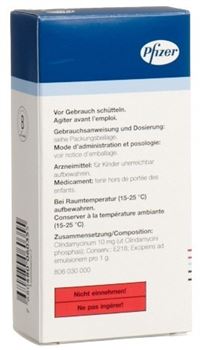The new tariff policies are disrupting the landscape of medical technology. Unforeseen consequences are already being felt on the supply chain. American manufacturers are struggling to maintain their efficiency in the face of these challenges.
In a world where medical innovation is crucial, the tariffs imposed by the Trump administration have caused significant disruptions. These tariff barriers affect not only final products but also critical components and essential subassemblies. Consequently, manufacturers based in the United States encounter major obstacles in maintaining optimal production. Marcel Botha, CEO of 10XBeta, emphasizes that these measures hinder local investments by limiting access to essential parts. Additionally, rising energy and logistics costs are directly impacting the construction of new technological infrastructures, such as AI dedicated data centers. The disruption of the supply chain threatens not only the profitability of businesses but also the availability of essential medical devices for patients. The stability and security of healthcare could thus be compromised if adequate solutions are not implemented quickly.
Marcel Botha explains that these tariffs affect both components and subassemblies, not only from China but also from other geographical regions. This diversity of origin creates varied behaviors where several countries impose similar tariffs to counterbalance American measures. The component-level products aimed at higher-value consumer goods have severely hampered local manufacturing capabilities. Companies that have relocated their production to take advantage of U.S. incentives are forced to reduce or cancel these investments because their supply chain is not entirely based in the United States.
Another notable impact of tariffs is the rising costs of high-value medical equipment, often valued between $25,000 and $40,000. These cost increases make the economic viability of devices difficult for health insurers, such as Medicare and Medicaid, which may not adjust their rates quickly enough. This situation could lead to the disappearance of certain essential medical devices, thus compromising treatment options available to patients.
Moreover, the supply chain for materials and adjacent products is also affected, resulting in repercussions for final goods exported to European and other markets. This widespread disruption results in a stagnation of the system, where products remain in limbo, unable to move effectively. The analogy of a traditional stopped clock aptly illustrates this frustrating immobility caused by tariff tensions. This status quo delays the arrival of medical devices on the market, exacerbating the challenges already faced in the healthcare sector.
Regarding the construction of data centers for AI, such as the Stargate project announced earlier this year, tariffs will also have a significant impact. These infrastructures require specific components and subassemblies sensitive to tariff levels. Increases in infrastructure and electricity costs are inevitable, further complicating the feasibility and profitability of such projects. The heightened pressure on electricity prices could force companies to turn to alternative energy sources, but these are also subject to the same tariff constraints, making the entire process more expensive and less efficient.
To mitigate these effects, Marcel Botha proposes several strategies for MedTech companies. One of these is to stockpile essential components to counteract supply chain disruptions. Another approach is to negotiate for tariff relief or tariff reciprocities, drawing inspiration from international examples where brands like BMW benefit from more favorable tariff conditions by having local production facilities. Implementing such measures could help companies navigate the complex tariff landscape more effectively.
However, the stockpiling strategy carries risks, especially concerning counterfeit components. Purchasing parts from third-party sources can lead to quality and traceability issues, potentially endangering patient safety. Therefore, it is essential for MedTech companies to ensure the authenticity and reliability of the stored components to maintain the quality and safety of the medical devices provided.

What are tariffs and what is their impact on health innovation?
Tariffs are taxes imposed on imported products, directly affecting the cost of imported medical technologies. These tariffs, often established to protect local industries, have significant repercussions on health innovation. By increasing the price of essential components, they limit the ability of companies to invest in new technologies. According to Marcel Botha, CEO of 10XBeta, these tariffs not only increase the final product prices but also hinder access to critical components and subassemblies, thus slowing the development of advanced medical devices.
This situation is exacerbated by the need for a smooth supply chain to maintain the efficiency of American manufacturers. Tariffs can lead to production delays, increasing costs and reducing the competitiveness of American companies in the global market. For more information on the economic impacts of tariffs in the healthcare sector, see Lantern unveils an economic methodology to enhance tariff transparency in specialized care.
How do tariffs foster the emergence of counterfeits in the medical sector?
The increase in customs tariffs can create an environment conducive to the proliferation of counterfeits in the medical sector. When the costs of legitimate medical devices rise, companies try to compensate by cutting back on spending, which may include purchasing lower-quality or counterfeit components. Marcel Botha emphasizes that this situation compromises patient safety, as counterfeit products do not meet the strict standards required for medical devices.
Moreover, the difficulty in importing authentic components due to tariffs encourages some market players to turn to unverified sources. This not only jeopardizes the reliability of medical equipment but also the reputation of original companies. To learn more about the challenges related to counterfeits in MedTech, see The rise of AI in MedTech: Follow the new devices here.
What are the effects of tariffs on the supply chain of medical technologies?
Customs tariffs considerably disrupt the supply chain of medical technologies. Marcel Botha explains that these tariffs affect not only final products but also the components and subassemblies essential for the manufacturing of medical devices. This disruption makes it difficult for manufacturers based in the United States to maintain efficient and competitive production. Supply chain interruptions cause delays in manufacturing, increasing costs and limiting the availability of innovative technologies.
Additionally, tariffs can lead to a “siloing” of products, where components are blocked in transit, creating a limbo effect that immobilizes production systems. This situation is akin to a traditional clock that stops functioning, preventing any technological advancement. For a comprehensive overview of recent developments in the MedTech supply chain, see Weekly summary for May 3, 2025.
What strategies can MedTech companies adopt in response to tariffs?
In the face of challenges posed by customs tariffs, MedTech companies must adopt proactive strategies to mitigate their impact. One of the first strategies recommended by Marcel Botha is stockpiling or building reserves of essential components. Although this method requires a significant initial investment, it allows manufacturers to maintain their production despite tariff fluctuations.
Another approach is to seek tariff exemptions or negotiate tariff reciprocities with customs authorities. For example, some companies may benefit from tariff reductions by establishing local production facilities, as BMW does in Germany for its models intended for import to foreign markets. To delve deeper into these strategies, see The CEO of AdvaMed advocates for an exemption from Trump’s tariff for the medical technology industry.
Furthermore, companies should strengthen their relationships with local suppliers to diversify their supply chain and reduce dependence on imports. This may involve integrating advanced technologies like artificial intelligence to optimize inventory and anticipate potential shortages. To explore innovations in the use of AI in MedTech, visit Nuro among the leading innovators selected for the global MedTech show 2025.
What are the risks associated with tariff mitigation strategies?
While strategies to counter the effects of tariffs can offer temporary solutions, they also carry inherent risks. For example, stockpiling can lead to additional costs related to storage and inventory management, without any guarantee that tariffs will not fluctuate further. Moreover, purchasing components from local or alternative suppliers may increase the risk of counterfeits, thereby compromising the quality and safety of medical devices.
Additionally, negotiating tariff reciprocities requires close coordination with authorities and a thorough understanding of international trade policies, which can be costly and time-consuming. Marcel Botha warns that without a careful assessment, these strategies may not provide the expected protections, leaving companies vulnerable to market fluctuations and political changes. To explore economic solutions aimed at increasing tariff transparency, see Lantern unveils an economic methodology to enhance tariff transparency in specialized care.
How do tariffs influence the business models of medical devices?
Customs tariffs disrupt the traditional business models of medical devices by making certain technologies less profitable. The American healthcare system, which relies heavily on reimbursements to determine the viability of medical devices, is particularly affected. According to Marcel Botha, tariffs increase production costs, complicating the economic viability of therapies, diagnostic tools, and medical consumables. This may lead to a reassessment of the rates reimbursed by Medicare and Medicaid, a process that is often lengthy and uncertain.
As a result, some innovations risk disappearing due to lack of profitability, thereby depriving patients of new therapeutic solutions. This situation forces companies to rethink their pricing strategies and seek more resilient business models in the face of trade barriers. For an in-depth analysis of the economic impacts of tariffs on medical devices, see Weekly summary for May 3, 2025.
What is the future of health innovation in the face of tariffs?
Despite the challenges posed by customs tariffs, health innovation must continue to progress to meet the growing needs of patients and global healthcare systems. Companies must adopt innovative approaches to overcome economic and regulatory obstacles. This includes integrating emerging technologies such as artificial intelligence and telemedicine to optimize production and distribution processes.
Marcel Botha highlights the importance of international collaboration and adapting business models to maintain a constant flow of innovations despite tariff constraints. By investing in sustainable solutions and strengthening local supply chains, the MedTech sector can not only survive but thrive in an increasingly complex business environment. To follow the latest innovations and solutions proposed by industry leaders, see Nuro among the leading innovators selected for the global MedTech show 2025.













